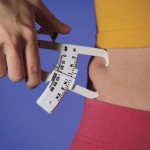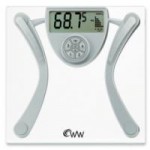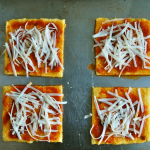Not a day goes by where I don’t hear someone discussing how they were able to lose fat and gain muscle. It has been coined the “lose fat gain muscle” phenomenon. It’s usually the same type of scenario, if I haven’t seen somebody for a while or I’m talking to someone who is updating me on their progress, usually one of the first things I hear is that they lost fat. Before I get to say anything, they add in that they also gained muscle, of course, at the same time. ‘Lose Fat Gain Muscle!’
Bro #1: “Yeah bro, can’t you tell I lost weight? I put on like 10 pounds of muscle too.”
Bro #2: “Crazy how I weigh less, but I definitely put on some muscle.”
I could keep going, but you get the point. Lose fat, gain muscle – at the same time. How many supplements have you seen that claim they’ll let you do this? How many articles have you read that claim you can do this? Plenty, you know why? The consumer market works on fast results, and we all know how impatient we are as humans. We want it, and we want it now. We wouldn’t want it as much if it actually required hard work and dedication, right? So you can see how the fitness industry and media in general work in tandem to provide you with the fastest way to do whatever (six pack abs, big arms, beach body, etc.). However, getting back to reality, the truth is simple. Unless you are using steroids, thinking that you can lose fat and gain muscle at the same time is just not going to happen. Well, I shouldn’t be that harsh, let me explain.
The process of thermodynamics is absolute, that means there’s no workarounds. Whatever you’ve read about and been religiously pumped into believing through magazines or the media, you’ll have to let go. The reasoning for that is simple. Our bodies function in one specific way, based on calories (units of energy). Food is made up of calories, which in the end, are used as energy for our every day activities. What we eat per day, is what we take in (calorie wise) and every thing we do (including what happens inside of our bodies) requires energy (calories). Therefore, this translates into: Food (calories in) vs. Activity (calories out).
If we eat more food per day than we wind up burning through our total activity levels that day, we will wind up with excess calories. Over time, if we keep this up, we will put on weight. If we do the opposite and continually burn more than the amount of food we take in per day, over time, we will lose weight. At the same time, there is a maintenance amount of calories that we require (based on our weight/height/activity level) that we will burn automatically per day. For an extreme but simple example, if we remove the activity factor (what we do each day) and just go off of our body’s statistics, just the act of breathing and functioning (while laying still in bed for 24 hours without moving) is going to burn a certain amount of calories, that amount is your maintenance. Therefore, this whole process of calories in vs. calories out is based on whatever our maintenance is per day. If we wind up below our maintenance, we’ll lose weight. If we wind up above, we’ll gain weight (again, over time, unless you literally binge and eat some insane amount in one day). For more on this, read our maintenance calories article.
Now that I’ve effectively summarized the basics (which, in turn, summarizes both of the articles I linked to), let’s get to losing fat and gaining muscle. Understanding the above, you can clearly see that to lose fat, you need to do the opposite of what you do to gain muscle. Right there, you should see how doing both at once does not make sense. In order to illustrate this for you in the simplest of forms, I’m going to use a good old metaphor. So here it goes: Let’s say you are constructing a house -
If you need to build the first floor, but you only have enough materials to build the basement, can you accomplish your objective? On another note, if you’re attempting to remove the window in the basement, but don’t have enough tools to do so, can you accomplish your objective? Without being imaginative, we can clearly see the answer to both questions being a no. Now substitute your body for the house, and your actions for the tools. The end result is the same. If you’re attempting to gain muscle, but you’re not eating above maintenance, you are not giving your body the necessary amount of food needed for it to actually build muscle. If you’re attempting to lose fat, but you’re not giving your body enough of a reduction in calories, you’re not going to able to lose fat because you’re overfeeding your body and it can run off of the excess energy instead of focusing on taking away from your body fat.
In its most basic form, therefore, the concept of lose fat, gain muscle (at the same time) = an oxymoron. How are you supposed to be able to give your body enough nutrients to have enough to sustain itself (and THEN SOME to build new muscle), yet give it less nutrients than it needs so that it can effectively start to burn fat? It’s simple, you can’t. You either have to be eating a bit above to gain muscle, or a little below to lose fat. It sucks, but it’s better knowing this than trying something that’s physically impossible and wasting your time because you’re being lied to, right? I hope so!
Now, to spare ending the article on such a devastating note, there is technically a way to be able to do both. It’s not the optimal way to get things done, but if you don’t mind taking more time to achieve results then you might take a liking to this method. Think about it, if you have to be above to gain muscle, and below to lose fat, where can you theoretically average out to be able to do both? At maintenance! It’s rather widely understood that if you stick to eating right around maintenance for extended periods of time, you’ll be able to accomplish a successful body re-composition (change the way your body looks). Very often that involves losing fat, yet gaining muscle. If you understand how we’ve gotten to this point with all the calorie talk, you can hopefully see how hovering right around your maintenance can bring a mix of both.
Keep in mind, however, that this process is much slower. Usually, if you really get practical, those AT maintenance are supposed to simply stay the same. However, with some heavy training and a strong diet (high protein), some positive body recomp. should be expected. Again, since you’re not focusing on one of the two goals specifically, and allowing your body to be performing at optimal levels by focusing on that goal solely, the results will be much slower. Just like with anything else, doing two things at once is not as productive as sticking to accomplishing one task at a time, this is no different. Nonetheless, it does not mean both can’t be done with time together (lose fat, gain muscle). If you don’t mind taking your time, or you’re not really into the whole bulking/cutting cycle, go ahead, give it a try. Good Luck!








One Comment »